Composite Aerogel Comprised of Sodium Alginate and Bentonite via Supercritical CO2 Drying: An Efficient Adsorbent for Lysozyme
Abstract
:1. Introduction
2. Results and Discussion
2.1. Characterization
2.2. BET Analysis
2.3. Morphology of the Aerogel Beads
2.4. Swelling Properties of the Alg-Bt Composite Aerogel
2.5. Adsorption Properties of Complex Aerogels for Lysozyme
2.5.1. Effects of pH
2.5.2. Effects of Contact Time
2.5.3. Effect of Bentonite Content
2.5.4. Effect of Initial Lysozyme Concentration on Adsorption
2.5.5. Adsorption Isotherm
3. Conclusions
4. Experimental
4.1. Materials and Methods
4.2. Prepared Sodium Alginate Composite Aerogels
4.3. Characterization
4.4. Swelling and Density Measurements
4.5. Lysozyme Adsorption
Author Contributions
Funding
Institutional Review Board Statement
Informed Consent Statement
Data Availability Statement
Acknowledgments
Conflicts of Interest
References
- Wang, B.; Zhang, H.; Xie, Y.; Guo, W.; Hu, X.; Chen, R.; Wang, H.; Zhou, D.; Ye, X.; Zhang, W.; et al. Synchronous gelation and lanthanum introduction using bentonite/PVA/ SA as the matrix for efficient phosphate removal from aqueous media: Adsorptive behavior and mechanism study. J. Clean. Prod. 2022, 339, 130763. [Google Scholar] [CrossRef]
- Wan, W.C.; Zhang, R.Y.; Ma, M.Z.; Zhou, Y. Monolithic aerogel photocatalysts: A review. J. Mater. Chem. A 2018, 6, 754–775. [Google Scholar] [CrossRef]
- Lamy-Mendes, A.; Silva, R.F.; Durães, L. Advances in carbon nanostructure-silica aerogel composites: A review. J. Mater. Chem. A 2018, 6, 1340–1369. [Google Scholar] [CrossRef]
- Zheng, L.X.; Chen, X.Q.; Cheong, K.-L. Current trends in marine algae polysaccharides: The digestive tract, microbial catabolism, and prebiotic potential. Int. J. Biol. Macromol. 2020, 151, 344–354. [Google Scholar] [CrossRef]
- Quignard, F.; Valentinw, R.; Di Renzo, F. Aerogel materials from marine polysaccharide. New J. Chem. 2008, 32, 1300–1310. [Google Scholar] [CrossRef]
- Sahin, I.; Özbakır, Y.; Inönü, Z.; Ulker, Z.; Erkey, C. Kinetics of supercritical drying of gels. Gels 2018, 4, 3. [Google Scholar] [CrossRef] [Green Version]
- Yang, X.; Wang, W.; Cao, L.; Wang, J. Effects of Reaction Parameters on the Preparation of P4VP/SiO2 Composite Aerogel by Supercritical CO2 Drying. Polym. Compos. 2019, 40, 4205–4214. [Google Scholar] [CrossRef]
- Lee, K.Y.; Mooney, D.J. Alginate: Properties and biomedical applications. Prog. Polym. Sci. 2012, 37, 106–126. [Google Scholar] [CrossRef] [Green Version]
- Facchi, D.P.; Lima, A.C.; de Oliveira, J.H.; Lazarin-Bidóia, D.; Nakamura, C.V.; Canesin, E.A.; Martins, A.F. Polyelectrolyte complexes based on alginate/tanfloc: Optimization, characterization and medical application. Int. J. Biol. Macromol. 2017, 103, 129–138. [Google Scholar] [CrossRef]
- García-González, C.A.; Jin, M.; Gerth, J.; Alvarez-Lorenzo, C.; Smirnova, I. Polysaccharide-based aerogel microspheres for oral drug delivery. Carbohydr. Polym. 2015, 117, 797–806. [Google Scholar] [CrossRef] [Green Version]
- Shao, L.; Cao, Y.; Li, Z. Dual responsive aerogel made from thermo/pH sensitive graft copolymer alginate-g-P(NIPAM-co-NHMAM) for drug controlled release. Int. J. Biol. Macromol. 2018, 114, 1338–1344. [Google Scholar] [CrossRef]
- Yousri Eweida, B.; El-Moghazy, A.Y.; Pandey, P.K.; Amaly, N. Fabrication and simulation studies of high-performance anionic sponge alginate beads for lysozyme separation. Colloids Surf. A 2021, 619, 126556. [Google Scholar] [CrossRef]
- Escudero, R.R.; Robitzer, M.; Di Renzo, F.; Quignard, F. Alginate aerogels as adsorbents of polar molecules from liquid hydrocarbons: Hexanol as probe molecule. Carbohydr. Polym. 2009, 75, 52–57. [Google Scholar] [CrossRef]
- Horga, R.; Di Renzo, F.; Quignard, F. Ionotropic alginate aerogels as precursors of dispersed oxide phases. Appl. Catal. A 2007, 325, 251–255. [Google Scholar] [CrossRef]
- Ennajih, H.; Bouhfid, R.; Essassi, E.M.; Bousmina, M.; El Kadib, A. Chitosan–montmorillonite bio-based aerogel hybrid microspheres. Microporous Mesoporous Mater. 2012, 152, 208–213. [Google Scholar] [CrossRef]
- Rashid, M.; Shamsuddin, V.C.J.R.; Lay, M.C. Producing protein intercalated bentonite-Equilibrium, kinetics and physical properties of gelatin–bentonite system. Appl. Clay Sci. 2014, 87, 52–60. [Google Scholar]
- Benli, B.; Boylu, F.; Can, M.F.; Karakaş, F.; Çinku, K.; Ersever, G. Rheological, electrokinetic, and morphological characterization of alginate-bentonite biocomposites. J. Appl. Polym. Sci. 2011, 122, 19–28. [Google Scholar] [CrossRef]
- Zhou, F.; Luo, J.; Qi, B.; Chen, X.; Wan, Y. Horseradish Peroxidase immobilized on multifunctional hybrid microspheres for Aflatoxin B1 removal: Will enzymatic reaction be enhanced by adsorption? Ind. Eng. Chem. Res. 2019, 58, 11710–11719. [Google Scholar] [CrossRef]
- Mohammadi, M.; Heshmati, M.K.; Sarabandi, K.; Fathi, M.; Lim, L.-T.; Hamishehkar, H. Activated alginate-montmorillonite beads as an efficient carrier for pectinase immobilization. Int. J. Biol. Macromol. 2019, 137, 253–260. [Google Scholar] [CrossRef]
- Mohd Hussina, F.N.N.; Attan, N.; Wahab, R.A. Taguchi design-assisted immobilization of Candida rugosa lipase onto a ternary alginate/nanocellulose/montmorillonite composite: Physicochemical characterization, thermal stability and reusability studies. Enzyme Microb. Technol. 2020, 136, 109506. [Google Scholar] [CrossRef]
- Paul, D.R.; Robeson, L.M. Polymer nanotechnology: Nanocomposites. Polymer 2008, 49, 3187–3204. [Google Scholar] [CrossRef] [Green Version]
- Jiratumnukul, N.; Pruthipaitoon, S.; Pitsaroup, T. Nanocomposite alkyd coatings. J. Appl. Polym. Sci. 2006, 102, 2639–2642. [Google Scholar] [CrossRef]
- Chen, H.-B.; Wang, Y.-Z.; Sánchez-Soto, M.; Schiraldi, D.A. Low flammability, foam-like materials based on ammonium alginate and sodium montmorillonite clay. Polymer 2012, 53, 5825–5831. [Google Scholar] [CrossRef]
- Kiersnowski, A.; Serwadczak, M.; Kułaga, E.; Futoma-Kołoch, B.; Bugla-Płoskońska, G.; Kwiatkowski, R.; Pigłowski, J. Delamination of montmorillonite in serum—A new approach to obtaining clay-based biofunctional hybrid materials. Appl. Clay Sci. 2009, 44, 225–229. [Google Scholar] [CrossRef]
- Kalburcu, T.; Tabak, A.; Ozturk, N.; Tuzmen, N.; Akgol, S.; Caglar, B.; Denizli, A. Adsorption of lysozyme from aqueous solutions by a novel bentonite–tyrptophane (Bent–Trp) microcomposite affinity sorbent. J. Mol. Strut. 2015, 1083, 156–162. [Google Scholar] [CrossRef]
- Tian, Y.; Zhang, X.; Feng, X.; Zhang, J.; Zhong, T. Shapeable and underwater super-elastic cellulose nanofiber/alginate cryogels by freezing-induced Michael reaction for efficient protein purification. Carbohydr. Polym. 2021, 272, 118498. [Google Scholar] [CrossRef]

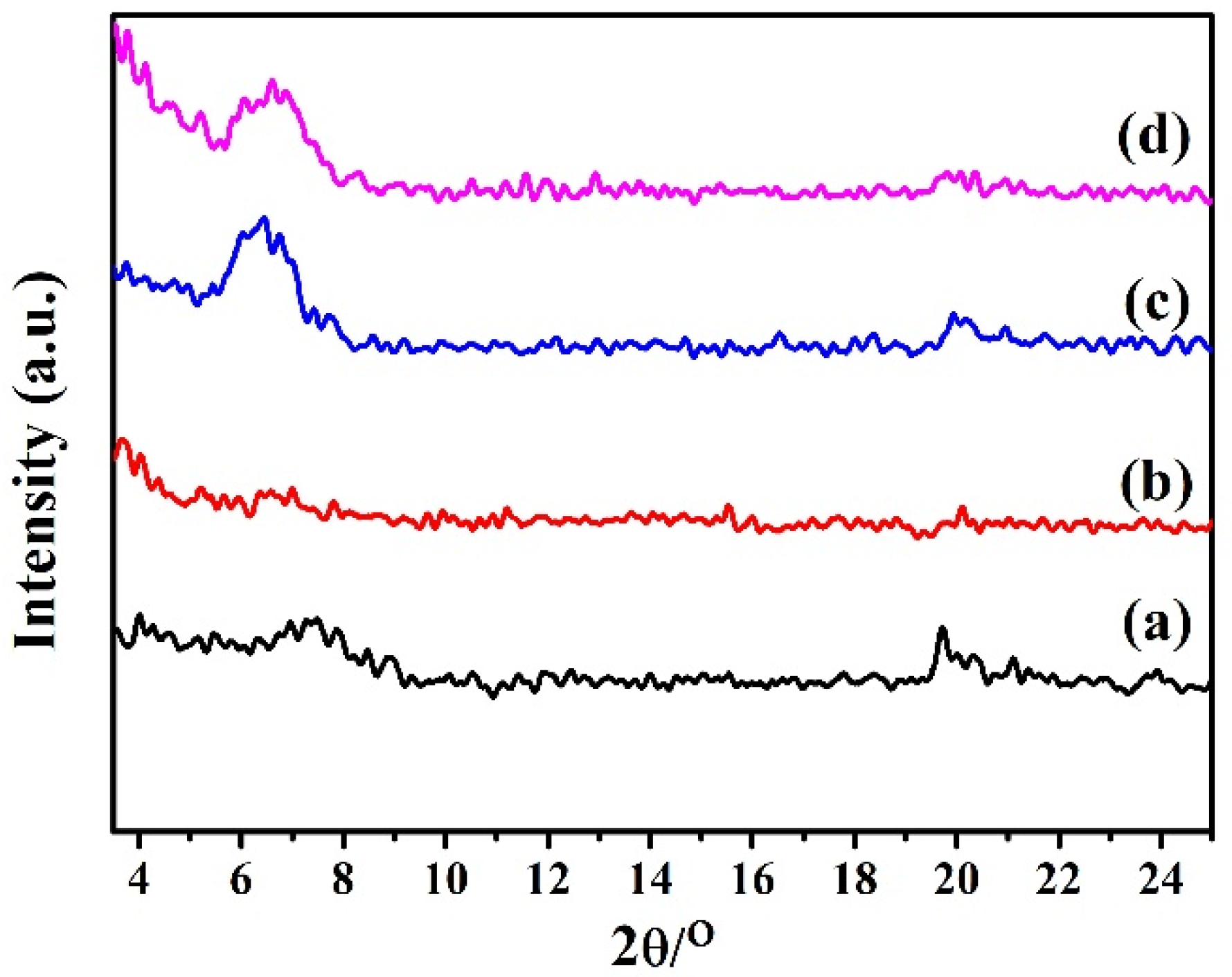
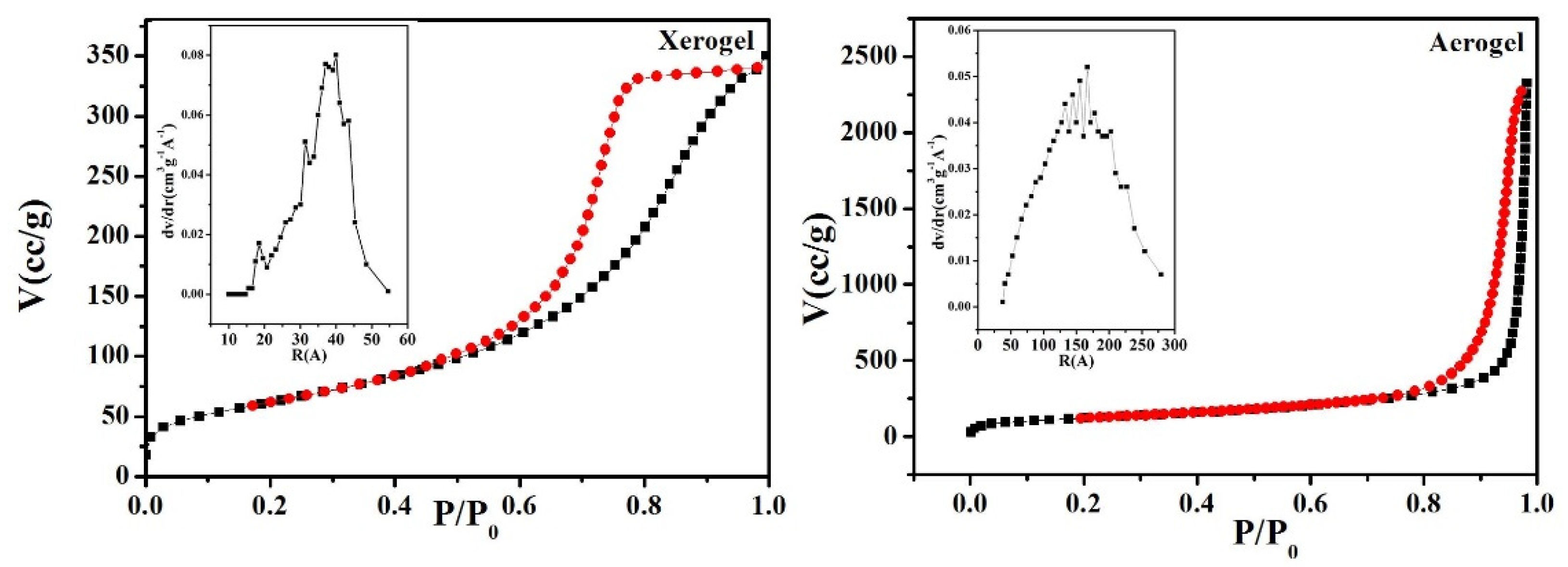


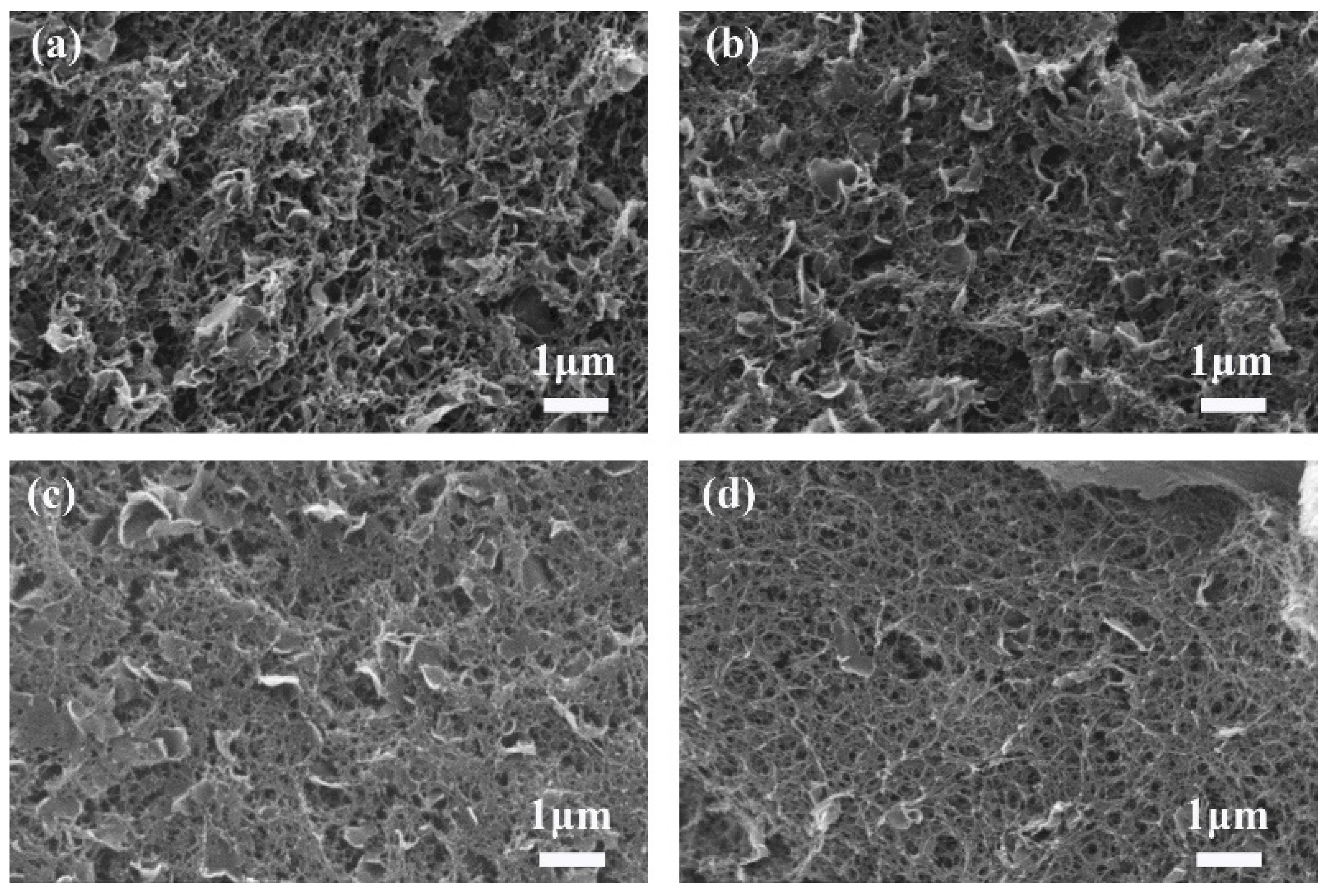
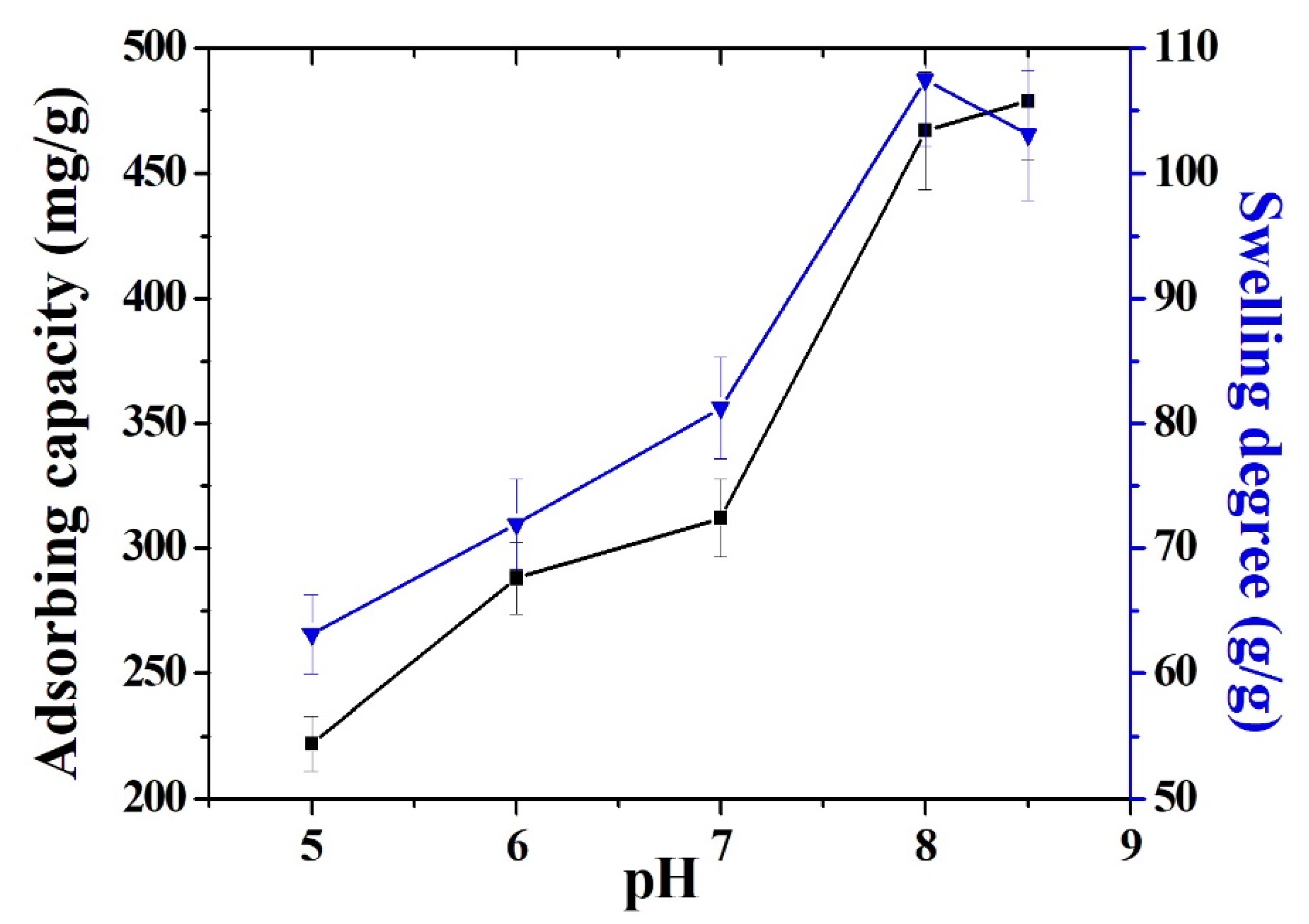
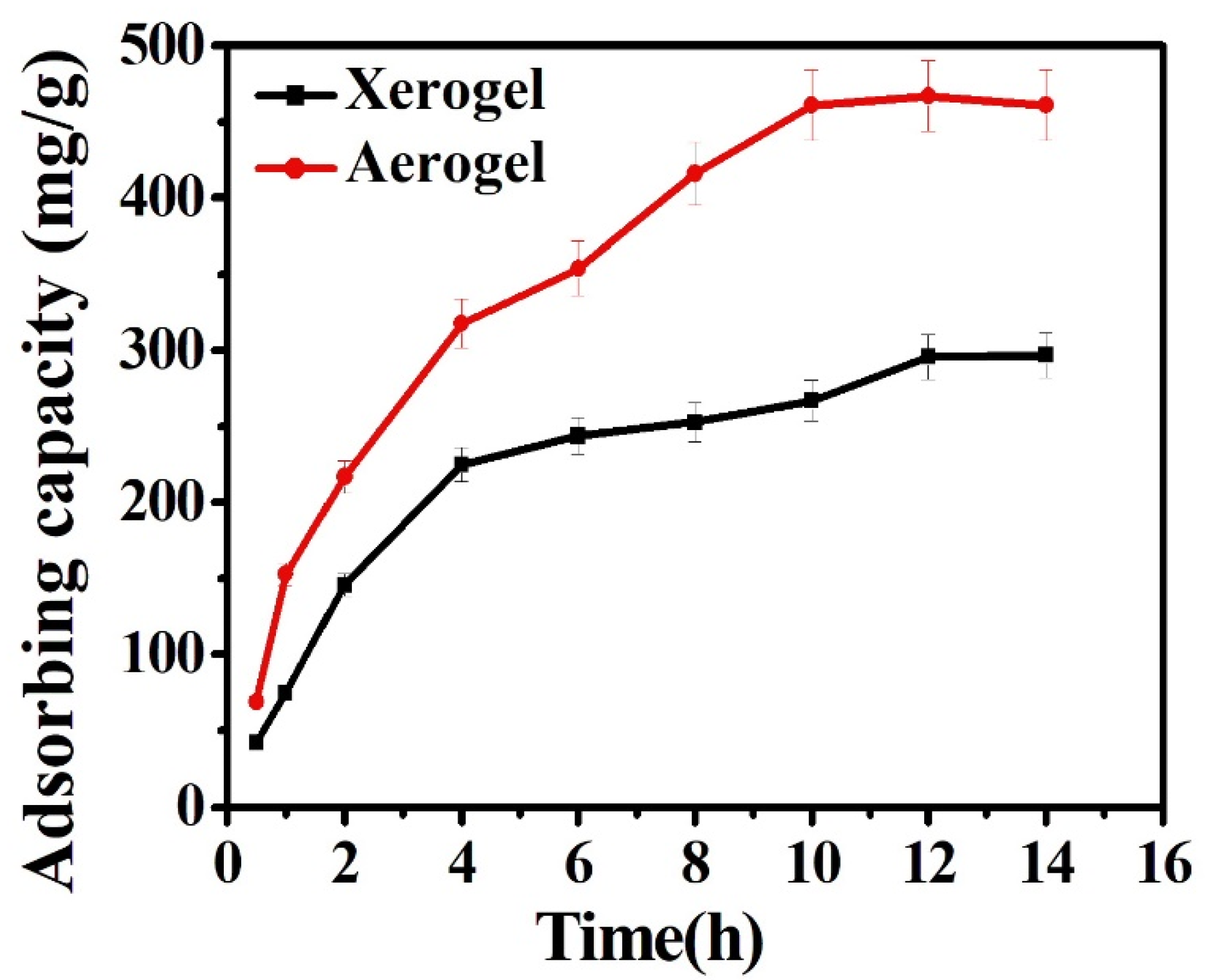
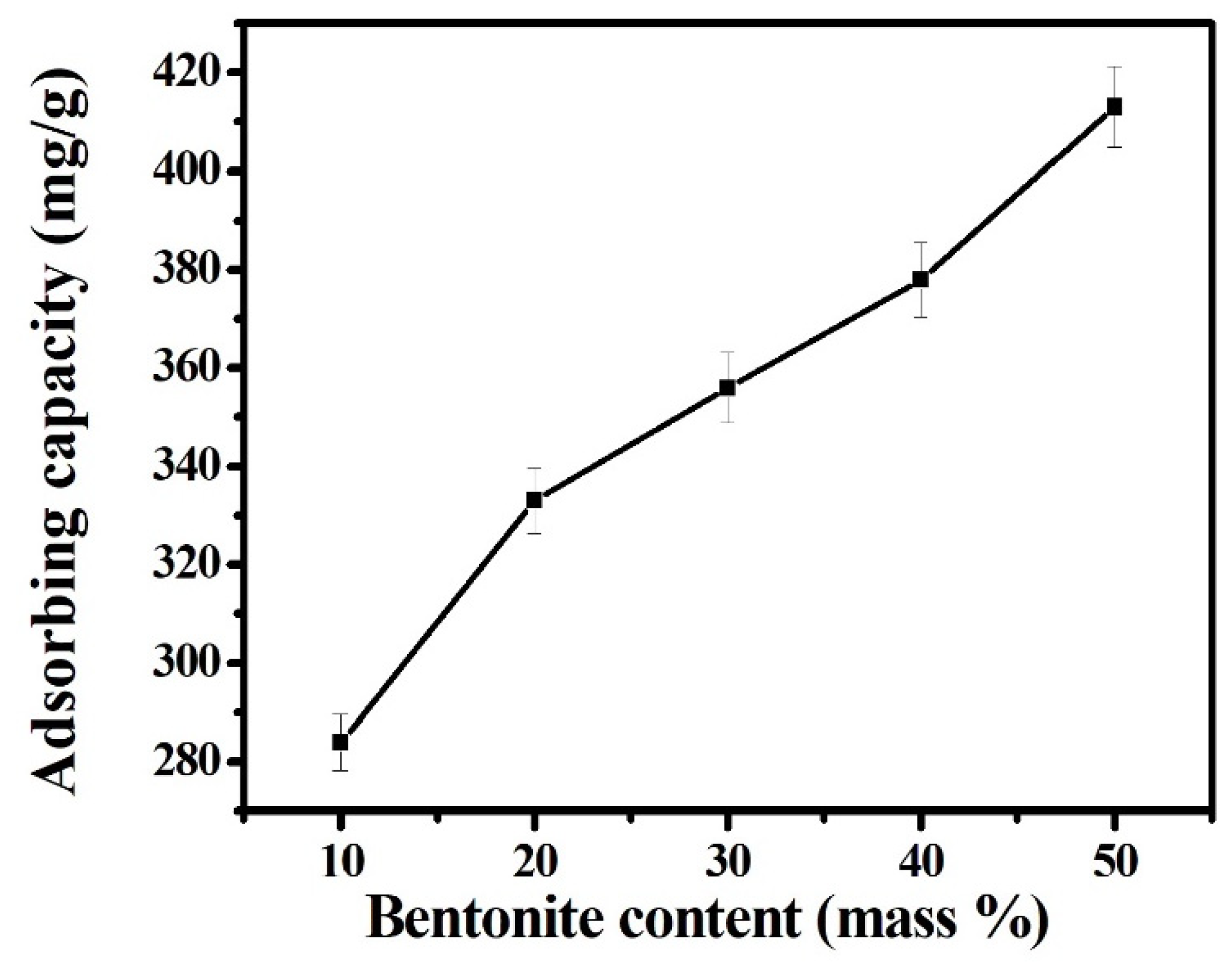

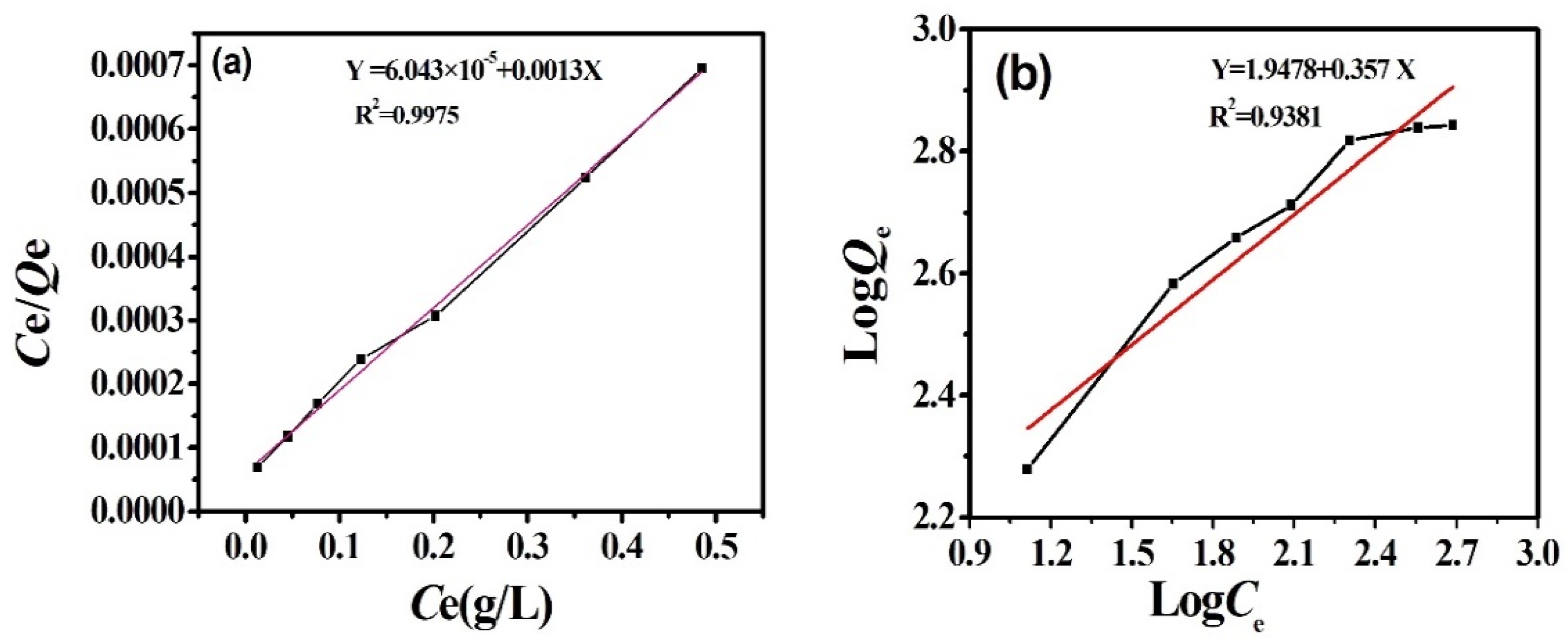
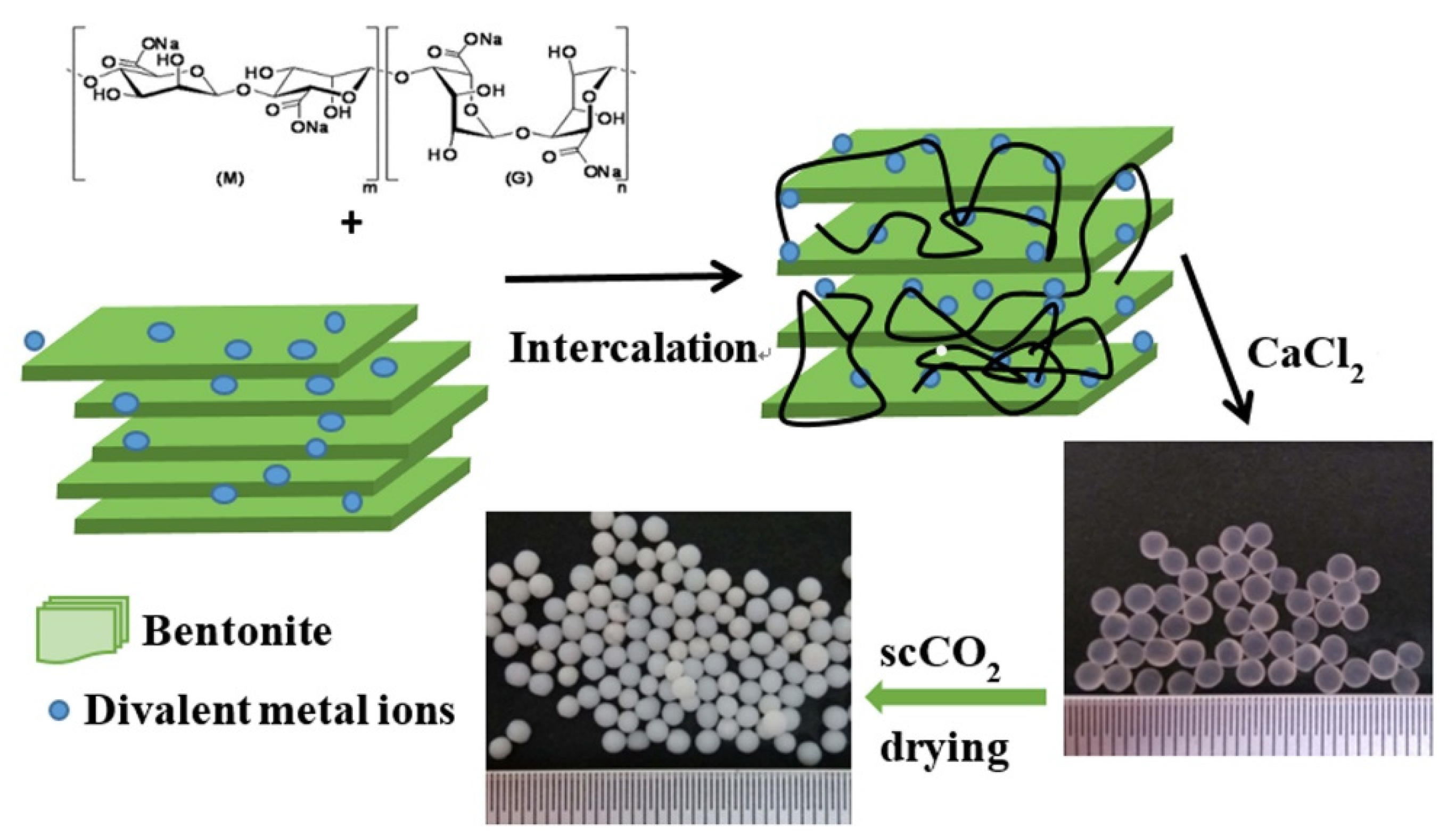
| Sample | Surface Area (m2/g) | Pore Volume (cm3/g) | Pore Diameter (nm) | Swelling Degree (%) | Density (g/cm3) |
|---|---|---|---|---|---|
| xerogel | 228 | 0.545 | 9.58 | 78.8 | 1.01 |
| aerogel | 445 | 3.617 | 32.62 | 107.5 | 0.059 |
| Sample | Volume Shrinkage (%) | Swelling Degree (g/g) | Density (g/cm3) |
|---|---|---|---|
| 1Alg-10Bt | 19 | 135.5 | 0.059 |
| 1Alg-30Bt | 46 | 118.5 | 0.363 |
| 1Alg-50Bt | 53 | 111 | 0.227 |
| 2Alg-30Bt | 44 | 107.5 | 0.282 |
| 3Alg-30Bt | 17 | 61.2 | 0.221 |
Publisher’s Note: MDPI stays neutral with regard to jurisdictional claims in published maps and institutional affiliations. |
© 2022 by the authors. Licensee MDPI, Basel, Switzerland. This article is an open access article distributed under the terms and conditions of the Creative Commons Attribution (CC BY) license (https://creativecommons.org/licenses/by/4.0/).
Share and Cite
Zhao, J.; Cao, L.; Dong, Y. Composite Aerogel Comprised of Sodium Alginate and Bentonite via Supercritical CO2 Drying: An Efficient Adsorbent for Lysozyme. Gels 2022, 8, 359. https://doi.org/10.3390/gels8060359
Zhao J, Cao L, Dong Y. Composite Aerogel Comprised of Sodium Alginate and Bentonite via Supercritical CO2 Drying: An Efficient Adsorbent for Lysozyme. Gels. 2022; 8(6):359. https://doi.org/10.3390/gels8060359
Chicago/Turabian StyleZhao, Jie, Liqin Cao, and Yong Dong. 2022. "Composite Aerogel Comprised of Sodium Alginate and Bentonite via Supercritical CO2 Drying: An Efficient Adsorbent for Lysozyme" Gels 8, no. 6: 359. https://doi.org/10.3390/gels8060359
APA StyleZhao, J., Cao, L., & Dong, Y. (2022). Composite Aerogel Comprised of Sodium Alginate and Bentonite via Supercritical CO2 Drying: An Efficient Adsorbent for Lysozyme. Gels, 8(6), 359. https://doi.org/10.3390/gels8060359






